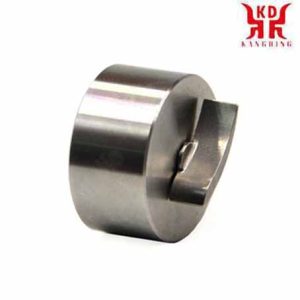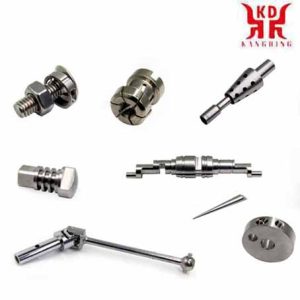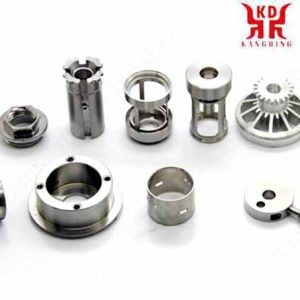What are the characteristics of medical device parts and the difficulty of CNC machining? Turning and milling of common medical Micro parts. The characteristics of titanium and stainless steel of medical parts materials.
 Medical stainless steel parts |
 Implant screw of medical titanium alloy |
 Medical titanium alloy implants |
Manufacture medical parts using CNC machining
To manufacture CNC-machined parts, the machining company must comply with the ISO 9001 quality requirements, but in the case of the manufacture of medical parts, other types of requirements must be met, complying with the standard of the International Organization for Standardization.
According to this organization, companies involved in the design, production, development, distribution or services of medical parts must demonstrate the ability to provide medical devices that consistently meet customer and regulatory requirements.
이를 위해, the standard used is ISO 13485, recognized by the most important regulators.

의료용 NiTi 메모리 합금 가공
Another factor that increases the complexity of CNC machining is the high tolerance accuracy range. The material, processing accuracy, and surface finish requirements of medical equipment parts and components are very high, which require high reliability of the processing system. 그러므로, extremely high requirements are also placed on machine tools, fixtures, 절단 도구, and CAM software.
Requirements for medical CNC machining
Manufacturers that use CNC machining, in addition to complying with all standards and certifications, must take a series of measures. The basic requirements to meet the demands in medical CNC machining are:
Precision machining to very tight tolerances
4 그리고 5 axis machining for complex geometries
A demanding level of cleanliness, especially when it comes to implant manufacturing
Wide variety of materials of manufacture, from stainless steel to medical plastics
A surface finish at the highest level
Medical implants by CNC machining process
Without a doubt, one of the most important applications of medical CNC machining is the fabrication and production of body implants.
CNC machining is very suitable for the patient and the creation of specific implants, since the response time is short and there is no cost of tools for the creation of custom implants and not in mass.
Implants are created from metals like titanium and special plastics like PEEK. These materials are strong and biocompatible.
It is essential that they are materials that do not decompose within the human body and that they do not suffer from corrosion.
In any case, there are materials that are difficult to machine since they accumulate heat and the coolant due to contamination issues is prohibited in most cases.
The most common implants created through CNC machining are hip, spine and knee implants.
The most commonly used materials for the manufacture of machined implants are titanium and cobalt-chromium alloys, stainless steels and polyether ether ketone (몰래 엿보다).
CNC 가공을 통한 수술기구 제작
CNC 가공을 사용하여 의료 전문가를 위한 수술 도구를 만들 수 있습니다.. 수술용 가위, 생검 튜브, 커터, 집게, 클램프, 이 제조 과정을 통해 더 많은 악기를 만들 수 있습니다..
Without a doubt, CNC 가공은 이러한 유형의 장비에 적합한 제조 공정입니다., 필요한 정밀도를 제공하고 필요한 안전 요구 사항을 충족할 수 있기 때문입니다..
의료기기 제조업체에서는 정밀도를 높이고 도구를 소량 제작해야 하기 때문에 CNC 가공을 사용합니다., 때로는 개별 환자에게도. 게다가, 결함을 방지하기 위해 완벽한 표면 마감을 보장할 수 있습니다..
수술 기구 제조에 가장 널리 사용되는 재료는 스테인리스강과 티타늄 합금입니다..
CNC machining to create parts for electronic medical equipment
CNC machines can be used to create parts for more complex equipment than surgical instruments, which consist of one or two metal parts.
There are medical equipment that can comprise many individual parts and many of them can be created from CNC machining.
These pieces can be very small items like switches or larger pieces.
All these parts must be of the highest standard so that the machine of which they are part does not present any subsequent failure. As they are not implants or surgical tools, many more materials can be used because they do not come into direct contact with the patient.
Among the medical equipment that use CNC machined parts we can find: ultrasound equipment, magnetic resonance imaging, diagnostic equipment, 모니터 …

Medical Micro machining parts
미세 가공
의료 산업 내에서, 때로는 매우 작은 부품을 제조해야 하는 경우도 있습니다.. 이러한 경우, CNC 가공은 필요한 정밀도로 매우 작은 부품을 제조할 수 있습니다.. 대부분의 경우 이러한 구성 요소의 크기는 다음보다 훨씬 작습니다. 50 미크론.
카테터 제조에 사용될 수 있습니다., 심장 박동기 구성 요소, 임플란트 또는 장치용 소형 나사, 다른 용도 중 안과용 부품.
모든 머시닝 센터가 이러한 유형의 부품을 만드는 데 적합한 것은 아닙니다.. 특히 정밀한 절단 도구를 사용하고 작은 부품에 대한 모든 공차를 충족해야 합니다..
공작물은 일반적으로 스위스 자동 선반과 같은 국제적으로 진보된 가공 장비에서 처리됩니다., 멀티 스핀들 공작기계 및 5축 로터리 테이블. 이러한 공작기계는 대부분 매우 작은 크기와 매우 컴팩트한 구조를 특징으로 합니다..
의료기기 부품 가공의 특성과 요구사항은 의심할 여지없이 가공 기술 및 솔루션 개발을 촉진합니다.. 의료용 액세서리 가공에 있어 중소기업의 경쟁력 및 생산 효율성 향상.
CNC 가공을 통한 제조 공정은 완벽한 정밀도로 인해 의료 산업에서 매우 중요합니다., 재료와 속도의 다양성. 수술 도구 제조에 유용합니다., 고관절 임플란트 및 다양한 의료 응용 분야.
의료기기 전문 매장 중 다수가 CNC 가공 공정을 통해 부품을 제작하고 있습니다.. This is due to the requirement to manufacture these parts with very strict tolerances and with safe and compatible materials. 게다가, they are capable of manufacturing the parts to meet all international requirements and standards.
Parts such as body implants, which require tight tolerances and a perfect level of precision, use CNC machining due to the ideal characteristics that this type of manufacturing presents.
Any workshop with machining machines can manufacture medical parts meeting the established requirements.
 English
English العربية
العربية 中文(漢字)
中文(漢字) Čeština
Čeština Dansk
Dansk Nederlands
Nederlands Suomi
Suomi Français
Français Deutsch
Deutsch Italiano
Italiano 日本語
日本語 ಕನ್ನಡ
ಕನ್ನಡ 한국어
한국어 Português
Português Русский
Русский Slovenčina
Slovenčina Español
Español Svenska
Svenska Türkçe
Türkçe

